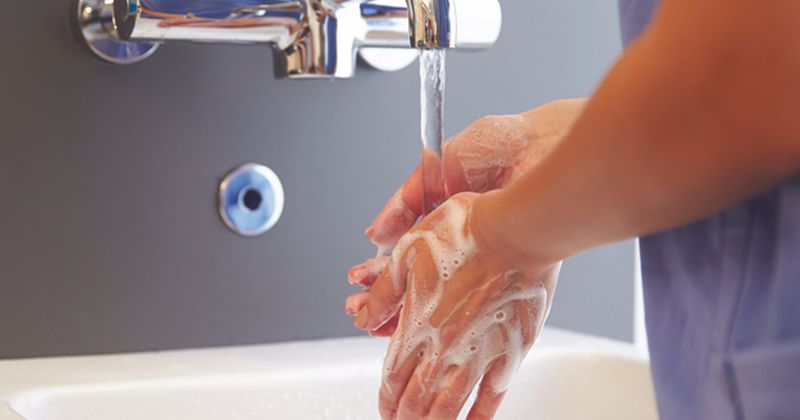Health care environmental hygiene ‘shockingly lacking’ globally
Click Here to Manage Email Alerts
Globally, many health care facilities lack good environmental hygiene practices, a survey found.
“After seeing the state of health care environmental hygiene (HEH) internationally, our team wanted to come up with a tool that could help health care facilities improve, regardless of their resource level,” Alexandra Peters, PhD, scientific lead for the Clean Hospitals infection control program and WHO Collaborating Centre on Patient Safety, told Healio. “The pilot study was the first step in the development of this tool.”

Source: Adobe Stock.

The survey was developed by a group of experts and based on WHO’s multimodal hand hygiene improvement strategy, which includes five goals including ensuring that the necessary infrastructure is in place to allow health care workers to practice hand hygiene, providing regular training, monitoring hand hygiene practices and infrastructure, and providing performance and results feedback.
The primary goal of the survey was to test a preliminary version of a framework for HEH self-assessment. The researchers used it to gather data on HEH programs around the world. They sent the survey to 743 health care facilities (HCFs) from all World Bank income levels.
In total, 51 HCFs from 35 countries participated, of which 98% reported that HEH was lacking in some or all of the five components of the WHO strategy.
Additionally, 71% of respondents believed that their facility gave enough importance to HEH, and 47% believed that the budget allocated for cleaning and disinfection was adequate. Other findings included that 67% of HCFs reported that necessary HEH products and supplies were always available, whereas 27% said they were sometimes available and 6% said they were never or rarely available. Among the 90% of HCFs that reported HEH equipment and supplies were available, 16% could still not perform adequate sterilization because equipment was not in good working condition.
Other survey results showed that just more than 50% of HCFs reported that their protocols were based on best practices and updated regularly and that only 22% of HCFs provided or required — if staff was outsourced — comprehensive formal HEH training upon hiring. Additionally, 28% did not provide or require any formal training at all.
Peters said the data show that HEH programs “are shockingly lacking all around the world” even in wealthy countries.
“HEH is not only a technical problem but also a human one,” she said. “Cleaning personnel have a very important role to play in patient safety. Institutions need to train and support the human components as well as the technical ones.”
References:
APIC. New survey illustrates challenges associated with healthcare environmental hygiene in facilities worldwide. https://apic.org/news/new-survey-illustrates-challenges-associated-with-healthcare-environmental-hygiene-in-facilities-worldwide/. Accessed on June 2, 2022.
WHO. A guide to the implementation of the WHO Multimodal Hand Hygiene Improvement Strategy. https://www.who.int/publications/i/item/a-guide-to-the-implementation-of-the-who-multimodal-hand-hygiene-improvement-strategy. Accessed on June 2, 2022.
